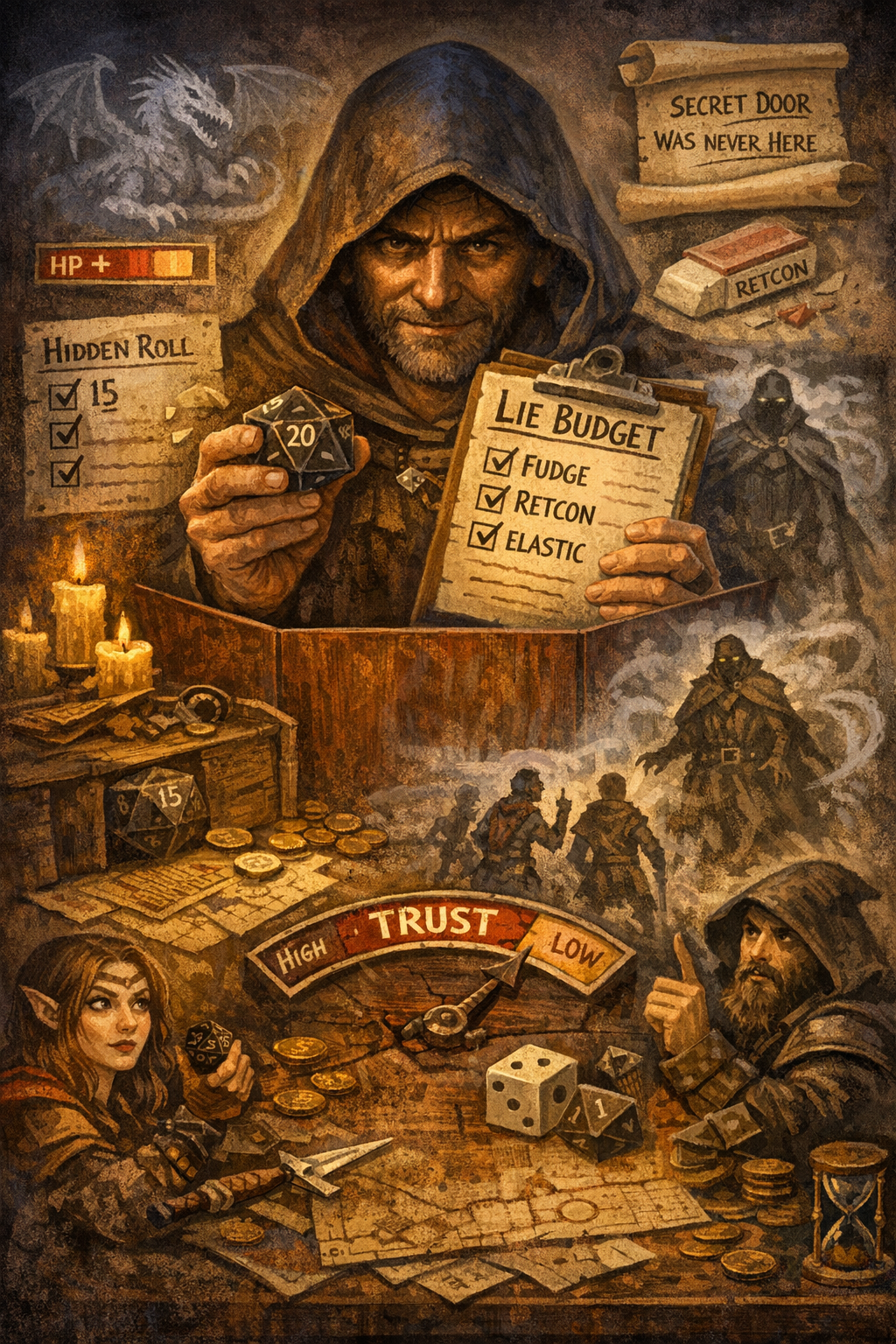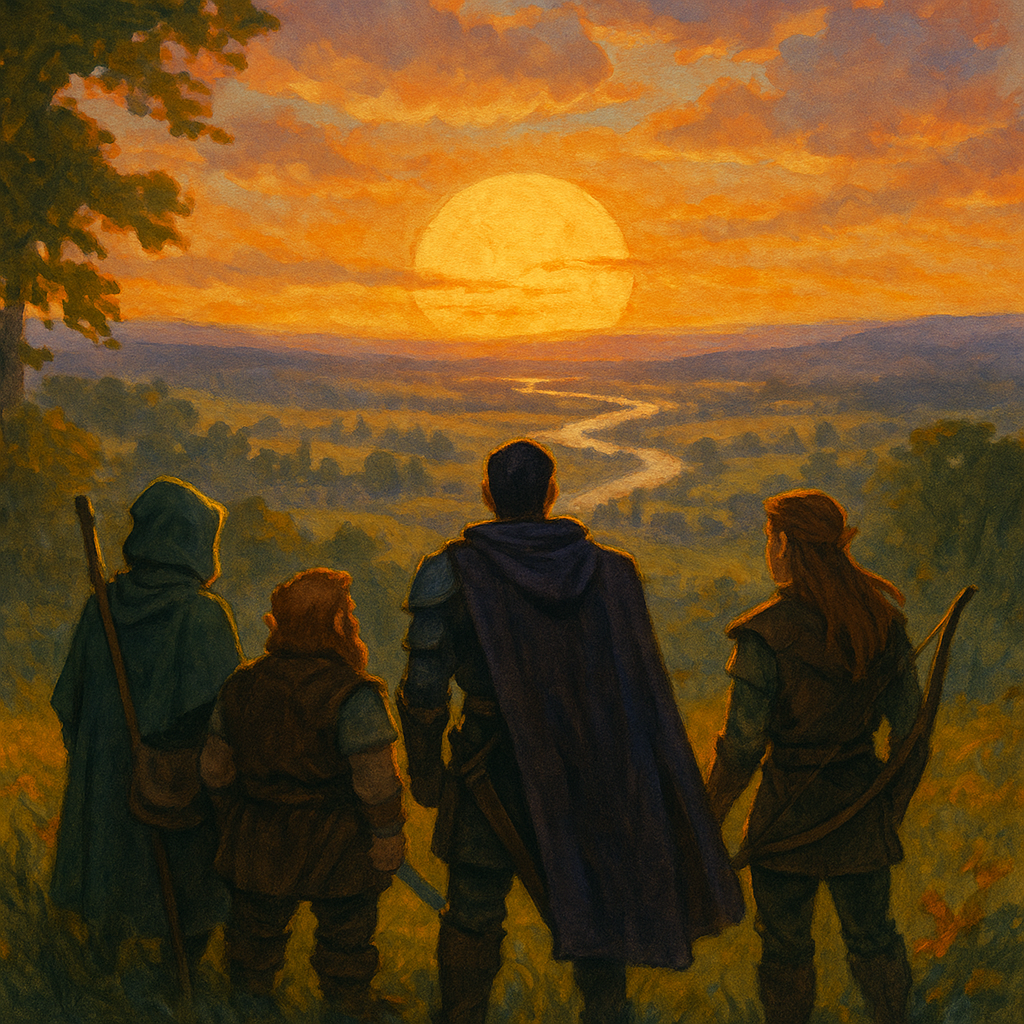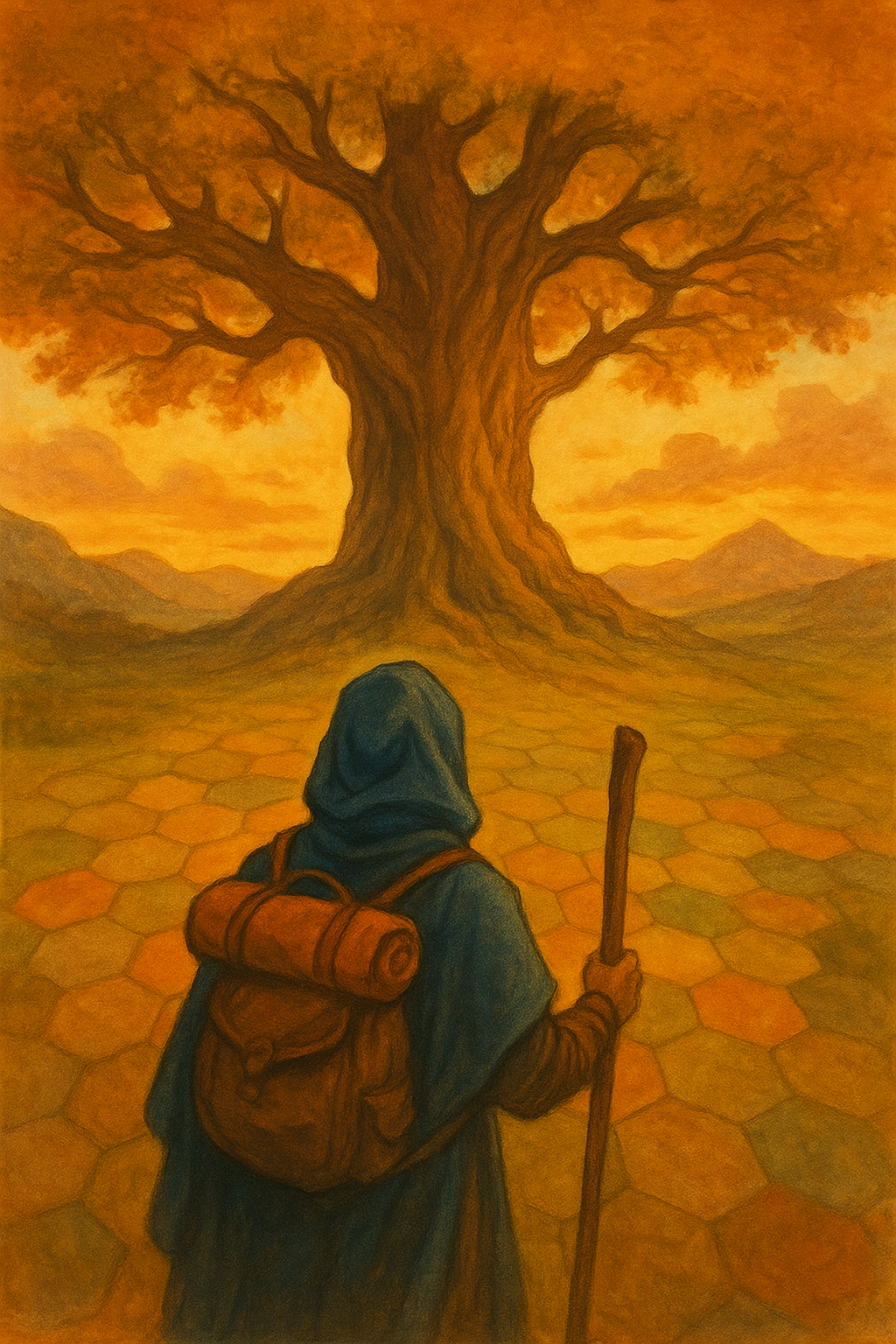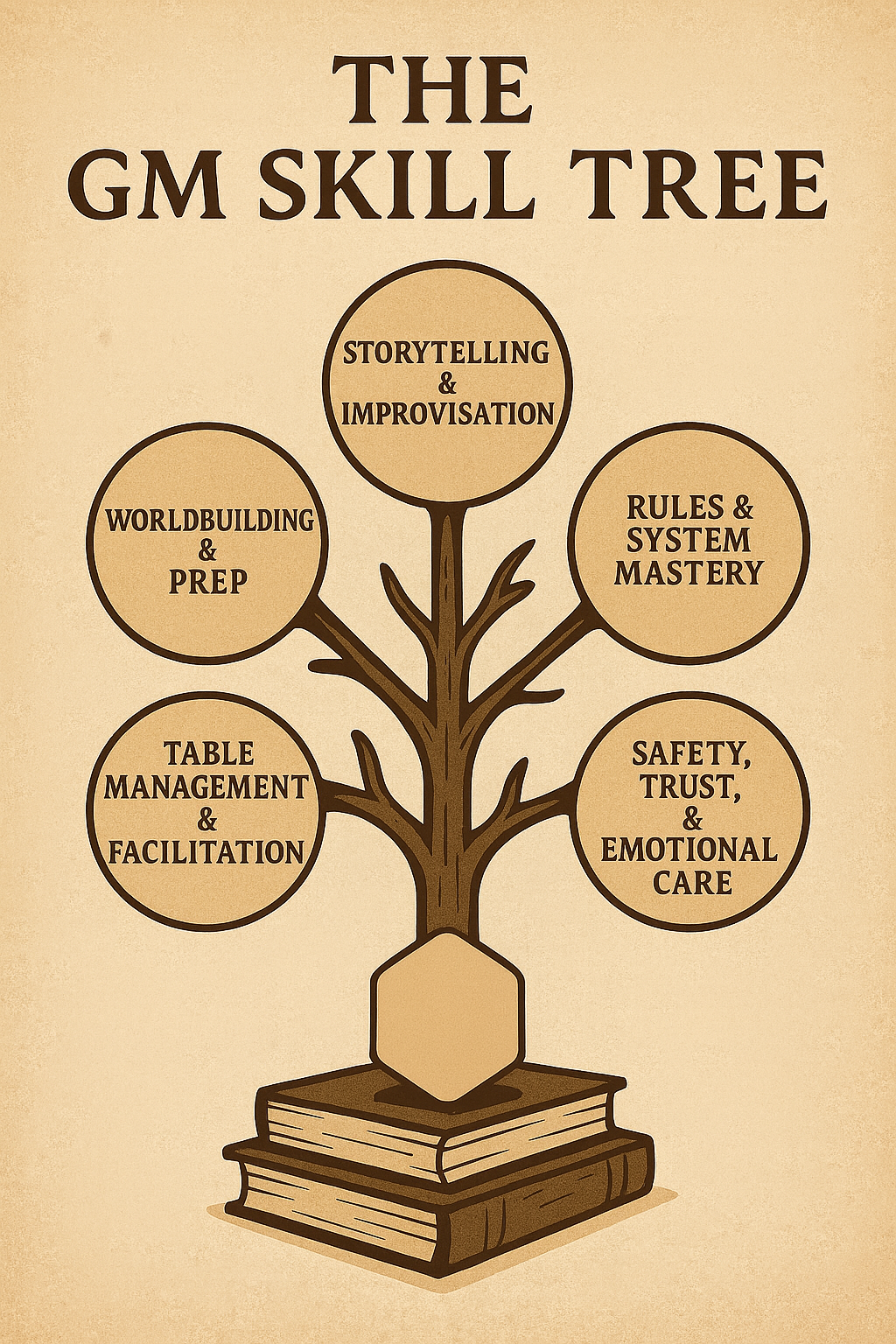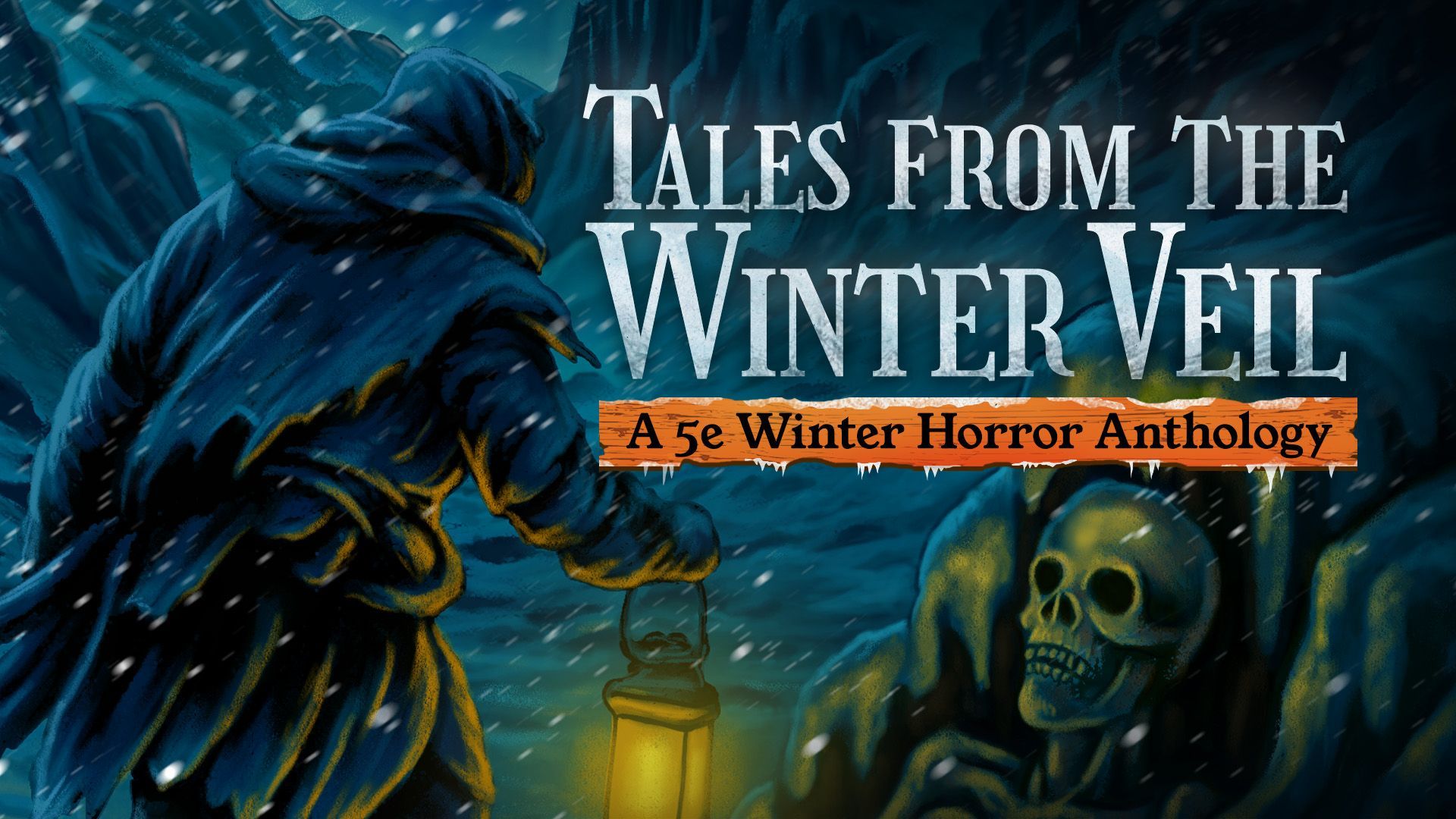Seasons of Magic: Crafting a Calendar-Based Spellcasting System
fantasy fun for every season!
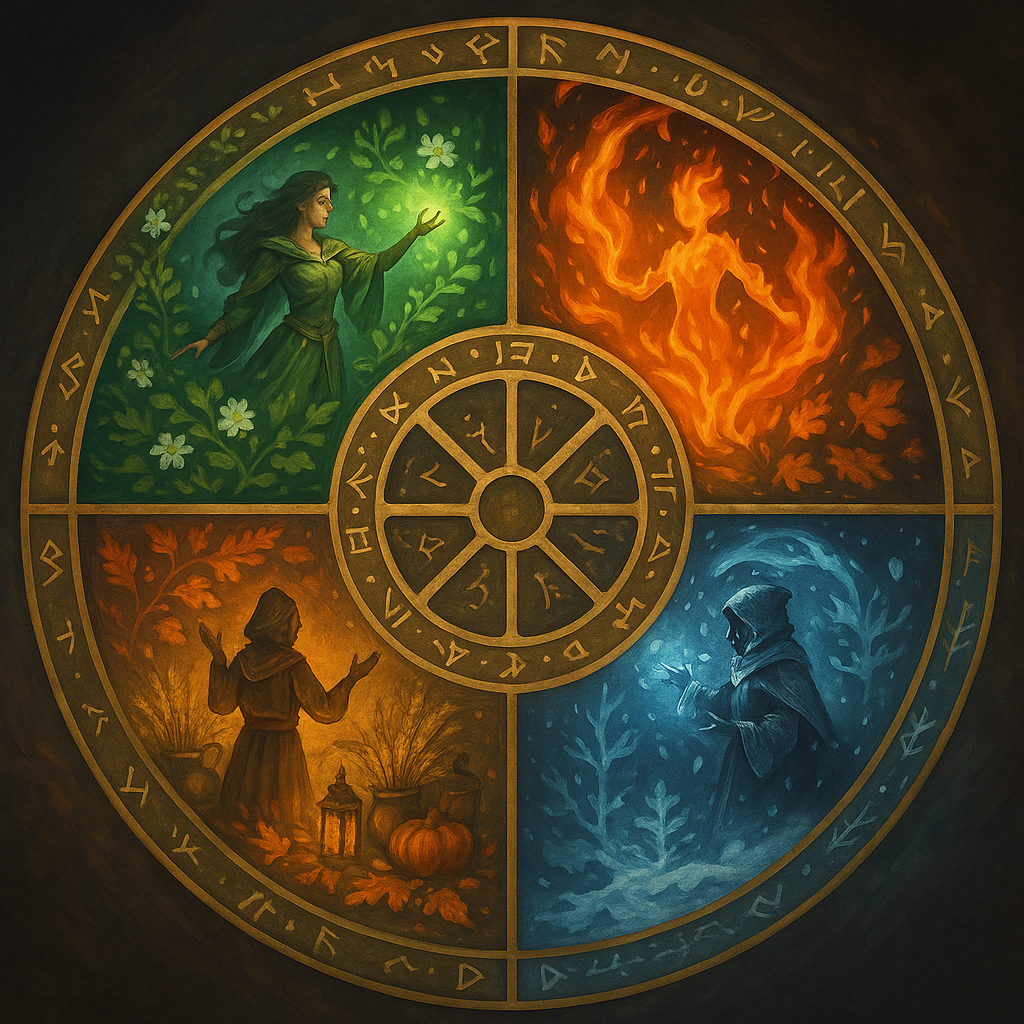
Dear Readers,
Magic has always been a cornerstone of Dungeons & Dragons—an arcane force that brings wonder, awe, and occasionally, utter chaos to our tables. Yet for many campaigns, spellcasting feels timeless and placeless: a wizard studies for days, memorizes spells, and casts them as needed, unaffected by the turning of the seasons. What if magic in your world was as much a part of the natural cycle as planting seeds in spring or harvesting grain in autumn? What if the potency, availability, and very nature of spellcasting shifted with the calendar?
In this post, we'll delve into the art of designing a Calendar-Based Spellcasting System, where the wheel of the year itself dictates the ebb and flow of arcane energies. By weaving spells into seasonal cycles, you can:
- Forge deeper connections between characters and the world’s ecology.
- Embed magical rituals into regional festivals and holidays.
- Create natural ebb-and-flow that shapes quest pacing and adventurer priorities.
- Offer players new strategic and roleplaying challenges tied to time itself.
Whether you’re running a high-fantasy epic or a low-magic wilderness survival saga, a calendar-based system can add a fresh layer of immersion and strategic depth. Let’s explore how to craft one for your next campaign.
1. Why Seasons Matter for Magic
In many fantasy settings, magic is portrayed as an abstract resource: a wizard prepares spells, casts them, recovers after a long rest, and repeats. This abstraction serves expediency, but at the cost of environmental realism. In contrast, a calendar-based system grounds magic in the world’s living cycle, offering:
- Narrative Resonance: Just as farmers celebrate spring planting or mourn autumn’s end, wizards and druids recognize the magical tides.
- Dynamic Challenges: A lightning storm in the height of summer carries greater raw power—both for and against the party.
- Player Choices: Characters must decide whether to delay a critical ritual until the season optimizes its effect, or cast early at a penalty.
- Immersive Worldbuilding: Seasonal magical festivals, rites of passage, and arcane fairs encourage exploration and community interactions.
Seasons tie magic to the passage of time, making each in-game month a potential source of excitement or dread. When a once-in-a-decade celestial alignment coincides with the harvest moon, your players can feel the weight of history—and the thrill of tapping into an energy that only surfaces every fifty years.
2. Designing Your World’s Calendar
Before you assign seasonal powers, sketch out the calendar itself. Consider:
2.1 Number of Seasons and Month Lengths
Most D&D worlds default to a familiar four-season year, but you have creative freedom:
- Four Seasons, Twelve Months: The classic model.
- Six Seasons, Six Weeks Each: More granular shifts—Ideal if you want brief but intense seasonal effects.
- Eight Festivals, Irregular Intervals: Focus on festival magic rather than standard seasons.
Decide if months align strictly with the solar year (e.g., 365 days) or are tied to lunar cycles, planetary orbits, or mythic events. The pacing of your campaign—how quickly time passes—should influence your choice. If adventurers tick through months rapidly, shorter seasons may keep the magic cycle lively.
2.2 Cultural Festivals & Holidays
Festivals are natural anchors for seasonal magic:
- Spring Equinox Rituals: Planting blessings for druids and rangers, granting temporary animal companion boosts.
- Midsummer Solstice Conclave: Wizards gather to share research, perhaps exchanging a known spell or gaining a seasonal boon.
- Harvest Moon Ceremonies: Clerics of nature deities perform rites that enhance healing spells for a lunar cycle.
- Winter’s Veil Vigil: A night-long vigil under a certain constellation grants spellcasters an extra ritual slot.
Each festival can offer a one-time or recurring magic effect. Players planning ahead may travel hundreds of miles to attend renowned arcane gatherings—creating natural incentives for exploration.
3. Seasonal Magic Themes
Tie each season to narrative and mechanical themes that reflect your world’s ecology and mythology.
3.1 Spring: Renewal and Growth
- Themes: Rebirth, fertility, new beginnings, swift development.
- Flora & Fauna: Budding flowers, fledgling beasts, quicksilver rivers.
- Arcane Flavor: Spells that animate plants, encourage rapid healing, or summon youthful creatures.
3.2 Summer: Zenith and Radiance
- Themes: Abundance, passion, strength, illumination.
- Flora & Fauna: Blooming meadows, fiery insects, radiant mushrooms.
- Arcane Flavor: Flames that dance like wildfire, radiance that blinds foes, lightning that crackles with raw energy.
3.3 Autumn: Harvest and Reflection
- Themes: Reaping, wisdom, endings that lead to preparation.
- Flora & Fauna: Fallen leaves, migrating creatures, storing seeds for winter.
- Arcane Flavor: Necromantic echoes, protective wards for homesteads, illusions that mirror harvest festivals.
3.4 Winter: Dormancy and Mystery
- Themes: Rest, secrets, purity, isolation.
- Flora & Fauna: Frost-kissed trees, hibernating beasts, pale moons.
- Arcane Flavor: Ice-crafted constructs, ghostly apparitions, spells that conceal and reveal hidden truths.
4. Spellcasting Mechanics Over the Year
Once you’ve set the thematic groundwork, layer in mechanical changes tied to the calendar.
4.1 Spell Availability Windows
Divide spells into Seasonal Tiers—which spells can be prepared or even found in scrolls and tomes during a particular season:
- Core Spells: Available year-round (cantrips, essential rituals).
- Seasonal Spells: Only prepareable or relearnable during the appropriate season without penalty.
- Off-Season Casting: Allows casting of seasonal spells outside their window, but at a higher spell slot cost (e.g., +1 slot level) or with a saving throw penalty for concentration.
By constraining the spell library, you create natural lulls and peaks in caster power. A druid suddenly deprived of Conjure Animals in midwinter may have to rely on different tactics—encouraging creativity.
4.2 Seasonal Potency Modifiers
Rather than gating spells completely, assign Potency Modifiers:
- +1 Bonus to spell save DCs or attack rolls for spells tied to the current season.
- –1 Penalty for the opposite season (e.g., fire spells in winter suffer a minor chilling effect).
Bonuses can be modest to avoid overshadowing core class abilities, but enough to make seasonal strategy meaningful.
4.3 Ritual Casting & Special Ingredients
Seasonal Magic often ties to potent rituals:
- Spring’s Dew of Renewal: A rare herb that only blooms in early spring. When burned in a ritual circle, any healing spell cast as a ritual restores an extra die of HP.
- Summer’s Ember Shard: A crystal formed deep in volcanic summer soils. Used to fuel an Investiture of Flame ritual, extending its duration by 1 hour.
- Autumn’s Amber Grain: Using harvest grain encrusted in amber, a Leomund’s Tiny Hut ritual also grants resistance to poison for its occupants.
- Winter’s Heart Ice: Carved from a glacier’s core, when used in a Divination ritual, reveals cryptic visions of upcoming threats.
Require players to gather ingredients via foraging, questing, or purchasing from specialty apothecaries—thus integrating seasonal exploration into spellcasting.
5. Designing Seasonal Spell Lists
Below are example spell lists for each season. Feel free to adjust levels, classes, and thematic details to suit your world.
5.1 Spring Spells (Levels 1–5)
- Verdant Grasp (1st Level Conjuration): Animate a small patch of plants to restrain a creature—bonus +2 to DC if cast during spring equinox.
- Healing Bloom (2nd Level Evocation): Heals 2d8 + spellcasting ability mod; increases by 1d8 if cast before the Spring Festival.
- Fledgling’s Flight (3rd Level Transmutation): Grants a willing creature a flying speed of 30 ft for 10 minutes—only functional during spring months.
- Renewal Rebirth (4th Level Necromancy): Revives a creature dropped to 0 HP within the last minute; only one creature per spring.
- Garden’s Sanctuary (5th Level Abjuration): Creates a 20-ft radius dome of entwined vines that grants full cover and heals 1 HP/person/round for its duration.
5.2 Summer Spells (Levels 1–5)
- Sunflare Bolt (1st Level Evocation): Ranged spell attack deals 1d10 radiant damage; +1d10 if cast at midday.
- Solar Charm (2nd Level Enchantment): Charm humanoid; duration extended by 1 round if cast on solstice eve.
- Wildfire Whirl (3rd Level Conjuration): Summon a small ring of flames that moves with the caster—ignites flammable objects in 5-ft radius.
- Lightning Surge (4th Level Evocation): Chain lightning effect that arcs to two additional targets if cast during a thunderstorm.
- Auric Shield (5th Level Abjuration): Grants a shimmering shield of golden light, granting resistance to fire and radiant damage.
5.3 Autumn Spells (Levels 1–5)
- Leafstep Veil (1st Level Illusion): Turn into swirling leaves, granting +2 to Stealth checks in wooded terrain.
- Harvest’s Bounty (2nd Level Conjuration): Instantly grow and harvest 1 week’s worth of edible crops in a 30-ft radius.
- Spectral Harvest (3rd Level Necromancy): Summon 1d4 + caster level ghosts of fallen stalkers—harvest lost memories or secrets.
- Protective Warding (4th Level Abjuration): Wards a 30-ft area; creatures inside gain +1 to all saving throws against necrotic and psychic damage.
- Autumn’s Reflection (5th Level Divination): Reveal illusions and hidden doors in 60-ft range; glass-like mirror remains for 1 minute.
5.4 Winter Spells (Levels 1–5)
- Frostfinger (1st Level Evocation): As Ray of Frost, plus target’s speed reduced by 5 ft—bonus effect if cast during a snowfall.
- Shroud of Silence (2nd Level Illusion): Silence spell with wisps of snowflakes swirling; lasts 2 rounds longer if cast on a moonlit night.
- Icebound Form (3rd Level Transmutation): Turn self or ally into living ice, granting damage resistance equal to proficiency bonus.
- Winter’s Embrace (4th Level Enchantment): Charm beast or humanoid for 1 hour; they perceive the caster as a protective guardian.
- Glacial Rift (5th Level Conjuration): Split the ground in a 40-ft line, creating difficult terrain and chilling creatures—DC 15 Con save or be restrained in ice.
6. Integrating Calendar Magic into Gameplay
Seasonal magic isn’t just spells—it’s a living system that should influence planning, travel, and narrative arcs.
6.1 Short-Term Planning & Downtime
Encourage players to think in seasons:
- Spell Research: A wizard may spend weeks preparing spring-only transmutation spells—ideal for downtime activities.
- Ingredient Foraging: Druids embark on seasonal herb-gathering quests, potentially clashing with rival factions.
- Festival Attendance: Characters may detour to attend a midsummer conclave, gaining unique boons or social contacts.
Seasonal planning adds texture to otherwise uniform downtime.
6.2 Major Quests & Seasonal Deadlines
Position critical events to align (or clash) with seasons:
- Plague of Ashes: A druidic circle warns that unless protected by October’s Harvest Barrier ritual, a forest will succumb to corruption.
- Firestorm Prophecy: Only during the summer solstice can a ritual weapon be reforged in the Emberforge’s heart.
- Frostbound Siege: Invaders know that winter’s first snow weakens city gates unless wards are recharged with a seasonal spell.
By linking quest deadlines to seasons, you instill urgency and narrative weight.
6.3 Regional Variations & Geography
Not every region experiences the same seasons:
- Tropical Realms: Wet and dry seasons replace spring and autumn—tie spells to monsoon rains or drought rituals.
- High Mountains: Perpetual winter grants constant access to cold spells, but denies summer boons.
- Magical Ley Lines: Some locales have their own micro-seasons—an enchanted forest where autumn lasts a month longer, granting extended access to harvest spells.
Regional calendars encourage travel and discovery as players seek favorable conditions for their magic.
7. Balancing Seasonal Spellcasting
To maintain fairness and engagement, watch for unintended imbalances.
7.1 Avoiding Seasonal Monopolies
If a party’s members are all druids, spring-only spells become overpowered in spring—but useless in fall. Mitigate this by:
- Allowing off-season access at a cost (higher slot level or material component).
- Offering multi-class or feat options that grant limited access to other seasons’ spells.
- Ensuring core cantrips and essential class features remain available year-round.
7.2 Ensuring Year-Round Engagement
Keep every season exciting:
- Rotate seasonal festivals that grant social or exploration boons (not just spellcasting).
- Introduce seasonal hazards—summer heatwaves, winter blizzards—that challenge non-casters as well.
- Offer magic items that mimic out-of-season spells once per day, preventing total power droughts.
Balance narrative novelty with mechanical viability.
8. Adventure Hooks & Story Seeds
A calendar-based system naturally generates plot ideas:
- The Missing Equinox: The spring equinox ritual failed—plants won’t grow, and forests are dying. Track down the saboteur before famine strikes.
- The Solstice Heist: A secret society steals the Ember Shard just before midsummer; without it, the king’s annual Flame Rite cannot be performed.
- The Harvest’s Lament: Revenant spirits of ancient farmers rise, demanding debts be paid. Negotiate or battle them before the autumn festival’s end.
- The Lost Constellation: Scholars discover that a star vanishing from winter’s night sky disrupts frost spells—restore celestial balance.
9. Player Experience & Roleplaying Opportunities
Calendar magic invites rich roleplay:
- Academic Rivalry: Two wizard colleges quarrel over ritual recipe rights for a major festival. Players can mediate or pick sides.
- Cultural Diplomacy: Characters attend a foreign harvest festival—learn new spells or offend local customs if they’re unprepared.
- Personal Growth: A druid PC who lost their magic during a long winter finds purpose in protecting a sacred grove until spring returns.
By making time itself a playable element, you deepen player immersion and investment.
10. Conclusion: Embracing the Wheel of Magic
A Calendar-Based Spellcasting System transforms magic from a static toolkit into a cyclical force intertwined with your world’s heartbeat. By anchoring spells, rituals, and festivals to the passage of days, months, and seasons, you:
- Weave richer narratives that echo the rhythms of nature.
- Challenge players to think beyond the next combat roll.
- Create memorable worldbuilding details that players discuss long after the campaign ends.
As your campaign’s years turn, let your players feel the joy of spring’s first bloom and the chill of winter’s deepest frost in every spell they cast. Seasonal magic reminds us that in a living world, nothing stands still—not even arcane energies.
Until next time, Dear Readers...
















